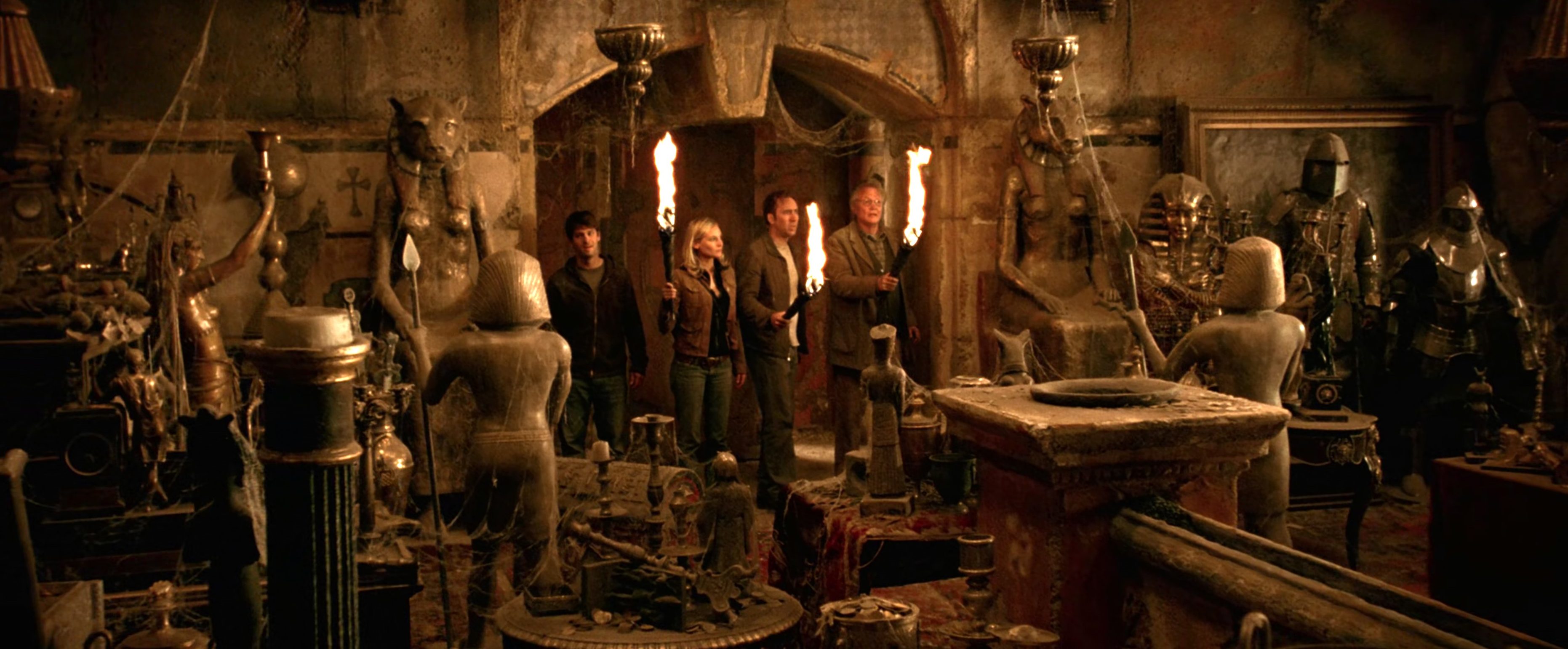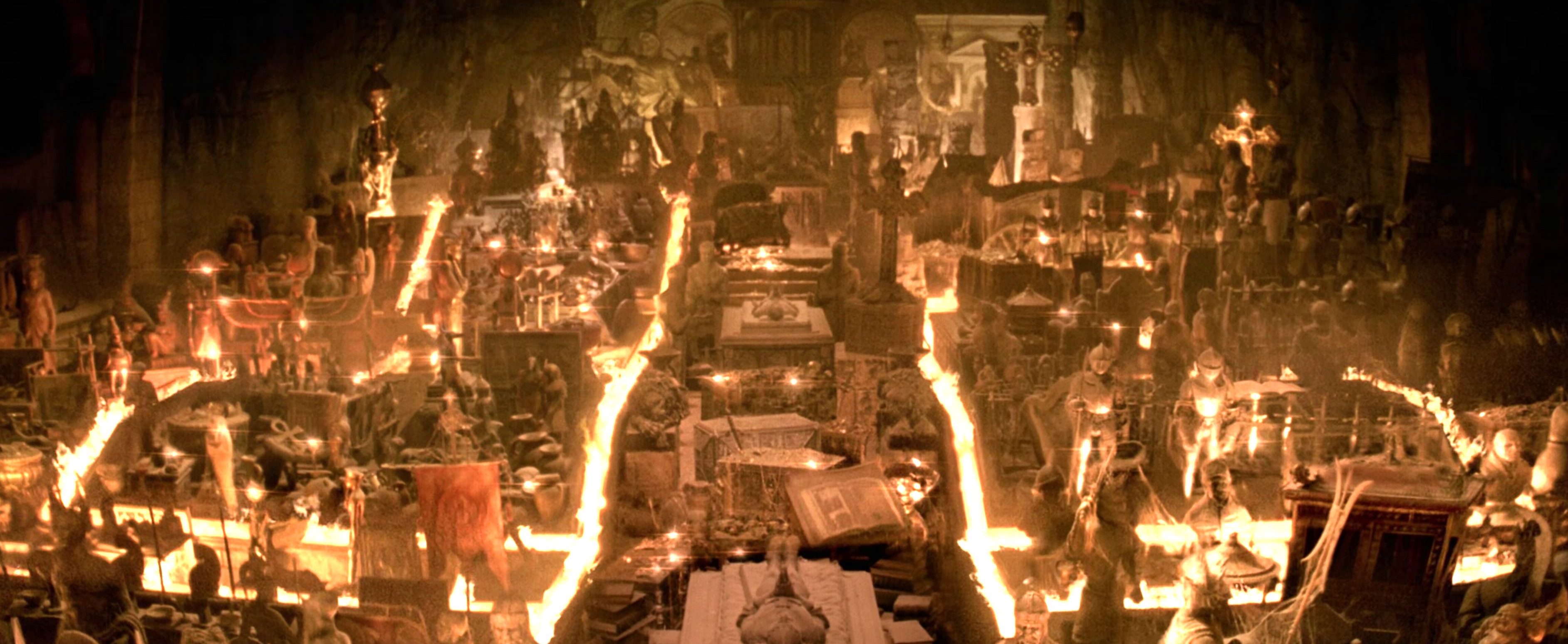The 2004 action-adventure film ‘National Treasure’ chronicles Benjamin Franklin Gates’ attempts to find the hidden treasure of the Knights Templar, which eventually ended up on American soil through the society of Freemasons. His commitment to finding the fortunes lead him to the secret vaults beneath the Trinity Church in New York City. In reality, the Knights Templar really existed, as the Treasure Hunt film depicts, like the Freemasons. Even the Trinity Church is a real religious landmark in the Big Apple. What makes the treasure in the movie more interesting is that there are legends about the Knights Templar laying their hands on invaluable fortunes. Does that mean the treasure in the heist film is real? Well, not really!
The Knights Templar and the Temple of Solomon
The simplest way to clear the confusion regarding the origin of the Templar treasure is to describe it as something inspired by a fortune that does not have any proof of existing. Over the years, in reality, many have dived into the possibility of the knights discovering a treasure beneath the Temple Mount, where the biblical Temple of Solomon was likely situated. The myths revolving around this fortune go on to add that the soldiers discovered or looted treasure from this site. However, there is no evidence whatsoever to prove that such a treasure ever existed on the site. Furthermore, the chronology of the Knights Templar also invalidates such a myth.

The Order of Knights Templar was formed only in the 12th century CE. Even if there was a treasure hidden beneath the Temple of Solomon, the Christian military order didn’t have a chance to find it. The particular temple site witnessed destruction by the Babylonians in 586 BCE and, later, by the Romans in 70 CE. The chances of the soldiers coming across a treasure the Babylonians and the Romans didn’t find centuries ago are little to none. If that’s the case, why exactly do historians consider the possibility of them being treasure keepers? The answer lies in their wealth.
The Christian military order was immensely rich, which convinced several historians to investigate whether their wealth could be traced back to any treasures. “They’re mysterious because they were so sensationally successful,” Lisa Bitel, a history professor at the University of Southern California, Los Angeles, told National Geographic. “The idea behind lots of these conspiracy and treasure stories is that any individual could happen upon a forgotten relic of the past, join with other like-minded mavericks, and use this relic for personal redemption or universal good,” she added. Apart from this, there isn’t any evidence to connect the myth to reality.
The Origin of National Treasure’s Freemason Treasure
Even though the roots of the Templar/Freemason treasure in ‘National Treasure’ lie in real-life legends, it can be seen as an outright fictional creation of the film’s screenwriters, Jim Kouf and the duo of Cormac and Marianne Wibberley. Kouf had immense exposure to Freemasonry since his grandfather was a Mason. When he started to learn more about the society, he realized that several of the Founding Fathers of the United States, including the 1st President George Washington, were Masons. Since there is a fraternal order of Knights Templar affiliated with the Freemasons, Kouf connected the dots and created the treasure in the action-adventure movie.

As a “history nut,” Kouf’s ultimate aim was to lead the viewers to the Founding Fathers through the fictional treasure. “Mostly, we set out to have a rollicking good time. But if it gets people to also look at history differently and pick up a book about the Founding Fathers, that’s great,” the screenwriter told National Geographic. Since tales of treasure have captivated audiences for centuries, he realized that the genre was perfect for him to fulfill his aim. The legends and myths surrounding the knights gave him a foundation to build on the fictional treasure, which is worth $10 billion in the movie. Kouf and the Wibberleys took immense creative liberties to expand on the legends associated with the Knights Templar.
The myths surrounding the Christian order suggest that the possible treasure was hidden somewhere in Europe rather than in the United States. Conspiracy theorists and treasure hunters have been particularly interested in the possibility of the fortunes being hidden in the village of Vrana in Zadar County, Croatia. Others point fingers at Rennes-le-Château in Southern France. Works like ‘The Holy Blood and the Holy Grail,’ written by Henry Lincoln, Michael Baigent, and Richard Leigh, put forward the theory that the soldiers took the Holy Grail to Scotland to hide underneath the Rosslyn Chapel, reminding us of the fictional discovery of the treasure beneath the Trinity Church in ‘National Treasure.’
Read More: National Treasure: Is Parkington Lane Based on an Actual Freemason?


You must be logged in to post a comment.